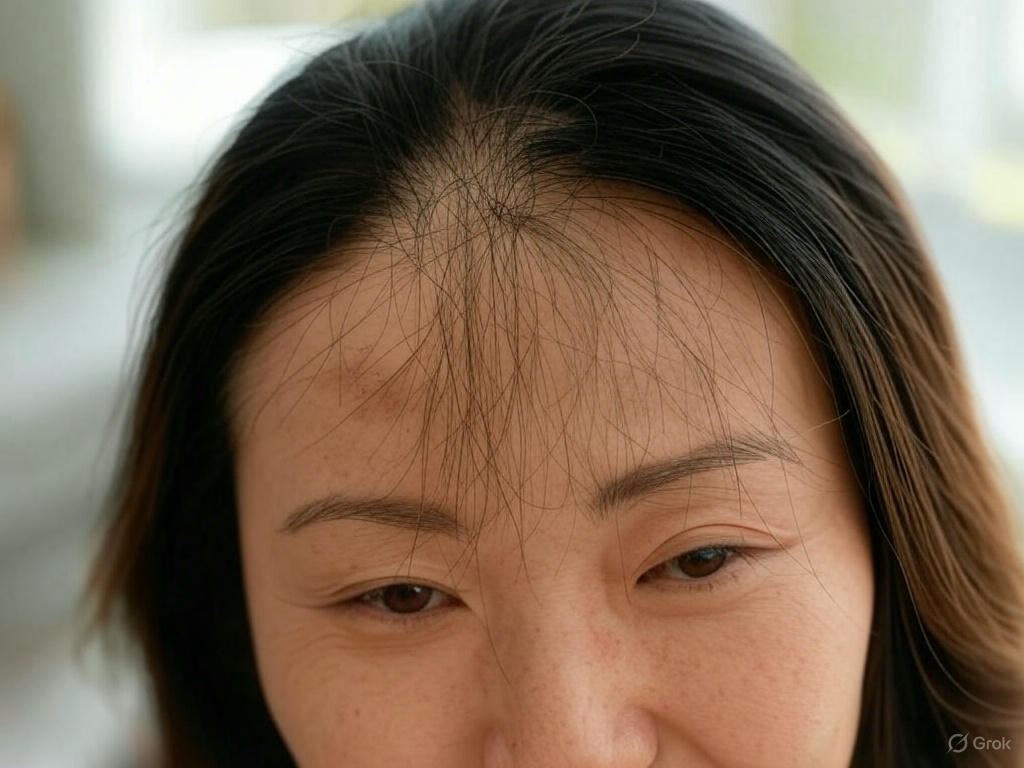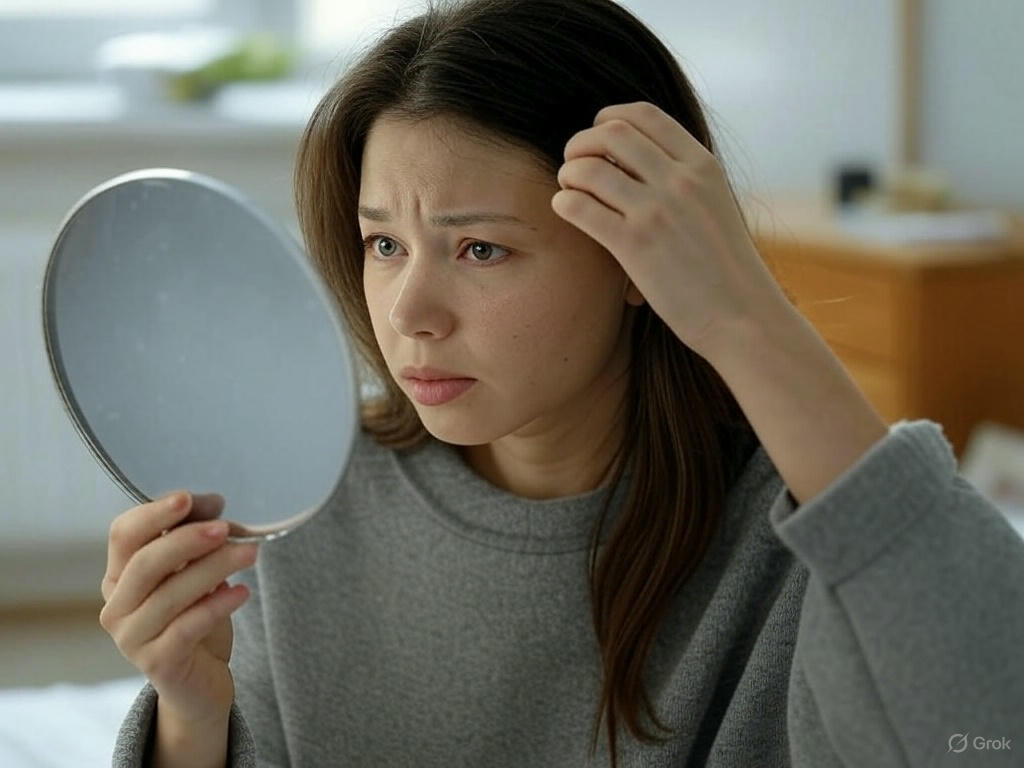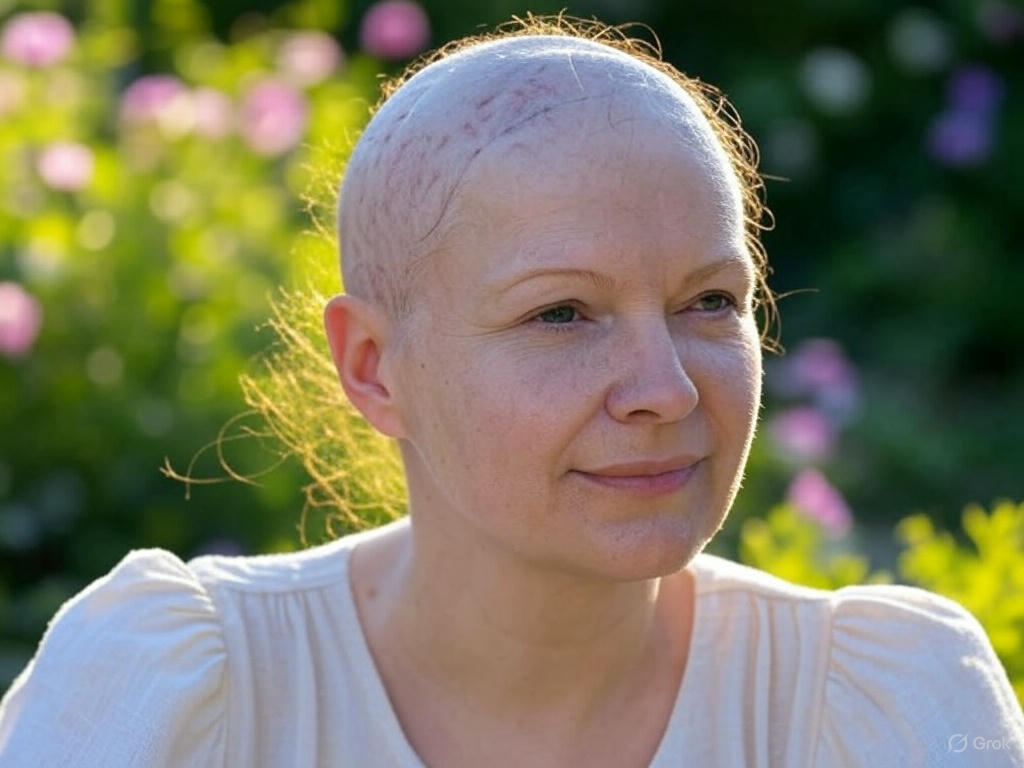1500+ ★★★★★ REVIEWS
Understanding Cicatricial Alopecia: Causes and Symptoms Explained

Cicatricial alopecia, often referred to as scarring alopecia, is a group of rare hair loss disorders that result in permanent damage to hair follicles. Unlike more common forms of hair loss, such as androgenetic alopecia, cicatricial alopecia involves inflammation that destroys the follicle and replaces it with scar tissue, making regrowth impossible. This condition can affect anyone, regardless of age or gender, though it presents unique challenges due to its irreversible nature. According to the National Organization for Rare Disorders (NORD), cicatricial alopecia is classified into primary and secondary types, with primary forms targeting the hair follicle directly and secondary forms resulting from external damage like burns or infections. Understanding its causes and symptoms is crucial for early detection and management, which can help slow its progression. For more insights into hair loss types, check out Hottie Hair’s guide to different alopecia conditions.
Table of Contents
What is Cicatricial Alopecia?

Cicatricial alopecia encompasses a diverse set of conditions where the hair follicle is irreversibly damaged due to inflammation. The Cleveland Clinic explains that this inflammation typically targets the upper part of the follicle, where stem cells and sebaceous glands reside, leading to permanent hair loss once these structures are destroyed. Primary cicatricial alopecia includes subtypes like lichen planopilaris, frontal fibrosing alopecia, and central centrifugal cicatricial alopecia (CCCA), each with distinct characteristics but a shared outcome of scarring. Secondary cicatricial alopecia, on the other hand, arises from external factors such as trauma or radiation, which indirectly harm the follicles. The condition’s rarity—accounting for about 7% of hair loss cases seen in specialty clinics, per the American Academy of Dermatology (AAD)—makes it less understood by the general public, yet its impact on those affected is profound.
Primary vs. Secondary Cicatricial Alopecia
The distinction between primary and secondary cicatricial alopecia lies in the source of the damage. Primary cicatricial alopecia occurs when the hair follicle itself is the target of an inflammatory process, often driven by autoimmune or unknown factors. The Mayo Clinic notes that conditions like lichen planopilaris and CCCA fall under this category, with inflammation classified as lymphocytic, neutrophilic, or mixed based on the type of immune cells involved. Secondary cicatricial alopecia, conversely, results from collateral damage to the follicles caused by external events, such as severe burns, infections, or surgical scars. According to Mount Sinai’s Alopecia Center of Excellence, secondary forms are less common but equally devastating. Understanding this difference is key to tailoring treatment approaches. Learn more about hair loss triggers in Hottie Hair’s overview of common hair loss causes.
Causes of Cicatricial Alopecia

The exact causes of cicatricial alopecia remain elusive, particularly for primary forms, but research points to a combination of genetic, autoimmune, and environmental factors. Inflammation is the central mechanism, destroying the follicle’s ability to regenerate hair. The National Institutes of Health (NIH) highlights that primary cicatricial alopecia often involves an immune system malfunction, where the body mistakenly attacks its own hair follicles. For secondary forms, the cause is more straightforward—physical or chemical damage leads to scarring. Lifestyle factors, such as certain hair care practices, may also play a role in specific subtypes, like CCCA. Identifying these causes can guide prevention and treatment strategies, offering hope to those at risk. For tips on protecting your hair, visit Hottie Hair’s hair care essentials guide.
Genetic and Autoimmune Factors

Genetic predisposition and autoimmune responses are significant drivers of primary cicatricial alopecia. Research from the Journal of the American Academy of Dermatology suggests that conditions like frontal fibrosing alopecia and CCCA may have hereditary components, with certain gene mutations increasing susceptibility. Autoimmune involvement is evident in cases where the immune system targets hair follicle stem cells, as seen in lichen planopilaris. The British Association of Dermatologists notes that this misdirected immune response leads to chronic inflammation and scarring. While the precise triggers for these autoimmune reactions are unclear, they underscore the complexity of the condition. Curious about hereditary hair loss? Read Hottie Hair’s take on genetic hair thinning.
Environmental and Lifestyle Triggers

Environmental and lifestyle factors can exacerbate or even initiate cicatricial alopecia, particularly in susceptible individuals. For instance, the DermNet NZ links CCCA, prevalent among women of African descent, to hair styling practices like tight braids, chemical relaxers, and heat tools, which may contribute to follicle damage over time. Secondary cicatricial alopecia often stems from environmental insults like burns or radiation therapy, as outlined by the American Hair Loss Association. Avoiding these triggers where possible can help mitigate risk, though primary forms are harder to prevent due to their internal origins. Check out Hottie Hair’s advice on safe hair styling for practical tips.
Symptoms of Cicatricial Alopecia

The symptoms of cicatricial alopecia vary widely, ranging from subtle hair thinning to dramatic bald patches accompanied by discomfort. The hallmark is permanent hair loss due to follicle destruction, often leaving the scalp smooth and shiny with no visible follicular openings. The AAD emphasizes that early recognition of these symptoms is vital, as timely intervention can halt further progression. Symptoms may develop gradually or rapidly, depending on the subtype and individual factors, making awareness critical for those affected.
Visible Signs on the Scalp

Visible signs of cicatricial alopecia include patchy or widespread hair loss, often with a smooth, scar-like appearance on the scalp. The Cleveland Clinic describes how affected areas may show redness, scaling, or pustules during active inflammation, though these signs may fade as scarring takes over. Loss of follicular ostia (the tiny openings where hair emerges) is a key indicator, distinguishing it from non-scarring alopecias like alopecia areata. In conditions like CCCA, hair loss typically starts at the crown and spreads outward, per JAMA Dermatology. Recognizing these patterns can aid in diagnosis.
Physical Sensations and Discomfort

Beyond visible changes, cicatricial alopecia can cause physical sensations ranging from mild to severe. The NIH reports that some individuals experience itching, burning, or tenderness in affected areas, especially during active inflammation. Others may feel no discomfort, with hair loss progressing silently over years. These symptoms can significantly impact quality of life, adding an emotional burden to the physical loss. For instance, rapid progression in conditions like folliculitis decalvans may bring intense scalp pain, as noted by Mount Sinai. Managing these sensations is a key part of treatment. Learn coping strategies in Hottie Hair’s living with hair loss article.
Conclusion

Cicatricial alopecia is a complex and challenging condition, marked by permanent hair loss due to follicle destruction and scarring. Its causes—ranging from genetic and autoimmune factors to environmental triggers—highlight the need for personalized approaches to management. Symptoms, both visible and sensory, serve as critical clues for early detection, which can slow the disease’s advance, even if regrowth remains out of reach. Resources like the Cicatricial Alopecia Research Foundation offer support and updates on emerging treatments, providing hope for those affected. For further reading on hair loss solutions, visit Hottie Hair’s treatment options page. Understanding this condition empowers individuals to seek timely care and navigate its challenges effectively.

FAQs: Cicatricial Alopecia
1. What exactly is cicatricial alopecia?
Cicatricial alopecia, also known as scarring alopecia, is a group of rare hair loss conditions where inflammation permanently damages hair follicles, replacing them with scar tissue. Unlike temporary hair loss, this damage prevents regrowth, making it a distinct challenge. It’s classified into primary forms, where the follicle is directly attacked, and secondary forms, caused by external factors like burns, as explained by the National Organization for Rare Disorders.
2. How is cicatricial alopecia different from other hair loss types?
Unlike non-scarring alopecias like alopecia areata, where hair can regrow, cicatricial alopecia involves irreversible follicle destruction due to scarring. The American Academy of Dermatology notes that inflammation targets the follicle’s stem cells, setting it apart from conditions like androgenetic alopecia, which thins hair without scarring. This permanence makes early intervention critical.
3. What causes primary cicatricial alopecia?
Primary cicatricial alopecia is often driven by genetic and autoimmune factors. The National Institutes of Health suggests the immune system mistakenly attacks hair follicles, causing inflammation and scarring. Conditions like lichen planopilaris and frontal fibrosing alopecia fall into this category, though exact triggers remain under research.
4. Can lifestyle choices lead to cicatricial alopecia?
Yes, certain lifestyle factors, like tight hairstyles or chemical treatments, can contribute, especially in cases like central centrifugal cicatricial alopecia (CCCA). DermNet NZ links these practices to follicle damage in susceptible individuals. Secondary cicatricial alopecia can also stem from burns or trauma, highlighting environmental influences.
5. What are the first signs of cicatricial alopecia?
Early signs include patchy hair loss, scalp redness, or scaling, often progressing to smooth, shiny areas where follicles once were. The Cleveland Clinic explains that these visible changes, along with the loss of follicular openings, signal scarring. Catching these early can help manage progression.
6. Does cicatricial alopecia cause pain or discomfort?
For some, yes—it can bring itching, burning, or tenderness, especially during active inflammation. The NIH notes that sensations vary; some feel nothing, while others experience significant discomfort, like in folliculitis decalvans. These symptoms often lessen as scarring replaces inflammation.
7. Who is most at risk for cicatricial alopecia?
While it can affect anyone, certain groups—like women of African descent with CCCA—are more prone due to genetic and styling factors, per JAMA Dermatology. Primary forms may also run in families, and secondary cases depend on exposure to trauma or injury, making risk profiles diverse.
8. Can cicatricial alopecia be cured?
Currently, there’s no cure, as the scarring permanently destroys follicles. However, treatments can slow progression, as outlined by the Cicatricial Alopecia Research Foundation. Early diagnosis and therapies like anti-inflammatory drugs aim to preserve remaining hair, not restore what’s lost.
9. How is cicatricial alopecia diagnosed?
Diagnosis typically involves a scalp biopsy to confirm scarring and inflammation type, alongside a clinical exam of hair loss patterns. The Mayo Clinic highlights that dermatologists assess symptoms like redness or pustules to distinguish it from other conditions, ensuring accurate treatment.
10. Where can I find support for cicatricial alopecia?
Support is available through organizations like the Cicatricial Alopecia Research Foundation, which offers resources and community connections. Online forums and dermatology clinics also provide guidance. For practical hair care tips, sites like Hottie Hair may offer complementary advice on managing hair loss.
You must be logged in to post a comment.